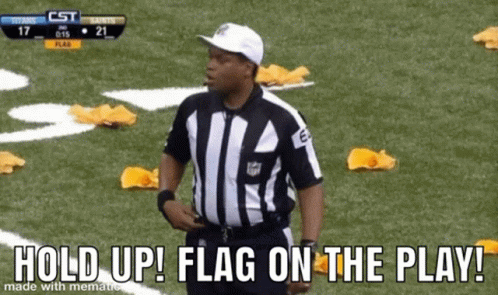One weakness that comes from being a self-described maker, is my tendency to under-communicate. I pride myself in the things I do and the things I get done. Less in the things I say (keynotes aside). But lately, I came to painfully realize that this tendency is hurting the perception of my performance and my career.
This hasn’t exactly been just recently. Three years ago, one of my mentors kept saying „Do good things and talk about it“, but nevertheless I continued communicating what I considered to be „just enough“. Three years later, my current manager kept pushing me that I have to increase the frequency of communication to the level, where I feel people are getting bored with the message.
A study conducted by Francis J. Flynn and Chelsea R. Lide presented strong evidence, that my intuitive stance on communication is hurting the perception of my ability while completely misjudging the risk of over-communication. The researchers found that leaders are nearly ten times as likely to be criticized for under-communication than over-communication. This is even more surprising as under-communications is more heavily penalized in comparison to over-communication as displayed in figure 1.

Leaders who under-communicate are viewed as less empathetic and therefore regarded as less qualified for a leadership position. Over-communication is also sub-optimal, but also just a tenth likely. And even for the cases that you should overshoot, it will hurt your perceived ability much less than under-communication.
Aiming for the sweet spot, which the researchers termed well-calibrated isn’t trivial, as the personal preferences of your stakeholders vary. Here a the things that helped me walk the tightrope.
Watch for under-communication flags

This is actually quite simple. Whenever a stakeholder asks you for the status of a project or an update, you are not communicating enough. When your meetings that were intended to make a decision get derailed by a lot of questions, you are not communicating enough. When you feel like you can’t delegate something because „they don’t get the context“, you are not communicating enough. If you hit the sweet spot, you will find stakeholders giving precise comments or ideas or simply a „thumbs-up“. If you communicate your plans and intentions sufficiently, you would have gotten the buy-in before the meeting. If you provide sufficient info on the context to your coworkers, it will be easy to get aligned and therefore easy to trust them to push in the right direction.
Push the boundary on asynchronous communication
The instances where over-communication becomes painful is when people have to spend time in meetings in which they are neither needed as input nor receive new information for work that is important to them. You also don’t want to call your manager daily to give him updates about all the mundane things you have done (stand-Ups aside). Synchronous communication is generally more taxing for the receiver as he has to invest exactly the same time as the sender. If the presenter presents for half an hour, everyone listening spends half an hour as well.
This is different from asynchronous communication which includes everything from a slack message to a full-blown written report. Asynchronous communication can be fully or partially skipped, depending on the receiver’s preference and the receiver can do so on his own timeline. Asynchronous also doesn’t mean uni-directionally. You can directly ask for comments on a written document, or even for the tiniest sign of reception like a thumbs-up when people received the message but have no comments or questions.
This type of communication also allows the stakeholder to pull information whenever they need it. So whenever e.g. your supervisor wonders about the progress on a project, he might just simply visit the slack channel of that project or pull up that up-to-date project report you send weekly.
For those instances, you do good to remind everyone that the information is there whenever they need it. But getting this right is a win-win situation for everyone.
Be as precise as possible and create definitions when needed

One thing business people can learn from engineers is the art of documentation. There is no other profession with such clear guidelines on what good documentation entails. Laws need lawyers to interpret what is being said. A well-documented API on the other hand leaves no room for interpretation. Every engineer can read such API docs and will walk away with the exact same understanding.
Non-tech topics are naturally less clear as they are less mechanistic and lack mathematical precision. So whenever you talk about things that are either not singular or ambivalent, give it a name to differentiate and make sure everyone sticks to that naming conventions.
During a particular project where we needed to connect different databases, which were all handling invoice-related data. People became increasingly irritated and confused whenever someone was referencing „the invoice database“ as there were three different options. The solution was to give each of these databases different names. We even called one „beer table“, as we used a beer icon on Airtable for that database. The obvious dual-meaning of „beer table“ aside, things became much cleared from there on.
Use the pyramid principle and executive summaries
The pyramid principle by Barbara Minto is by far the communication book I recommended most. One of the key ideas in a nutshell is to set the answer before the reason. Summarize the situation and the challenge in one to two sentences, then give the answer (which usually is your suggestion) and list afterward the reasons for your answer. Even if the reasons should be long and complicated, readers always know where you are heading as you told them the answer already. In case they agree with your answer anyway they can stop reading after two sentences.
For everything beyond three pages, write an executive summary for the same purpose. That way the reader can choose the level of detail himself.
Understanding these things is easy. But truly following them on a daily basis requires discipline and time. And if you are anything like me, you will fall of the bandwagon every now and then, but getting back-up is absolutely worth it.
Sources
Flynn, F. J., & Lide, C. R. (2022). Communication Miscalibration: The Price Leaders Pay for Not Sharing Enough. Academy of Management Journal, (ja).
When It Comes to Communication from the Top, Less Isn’t More

